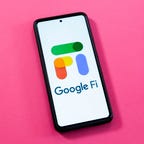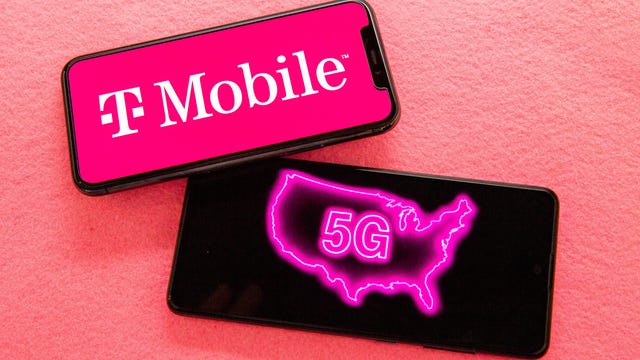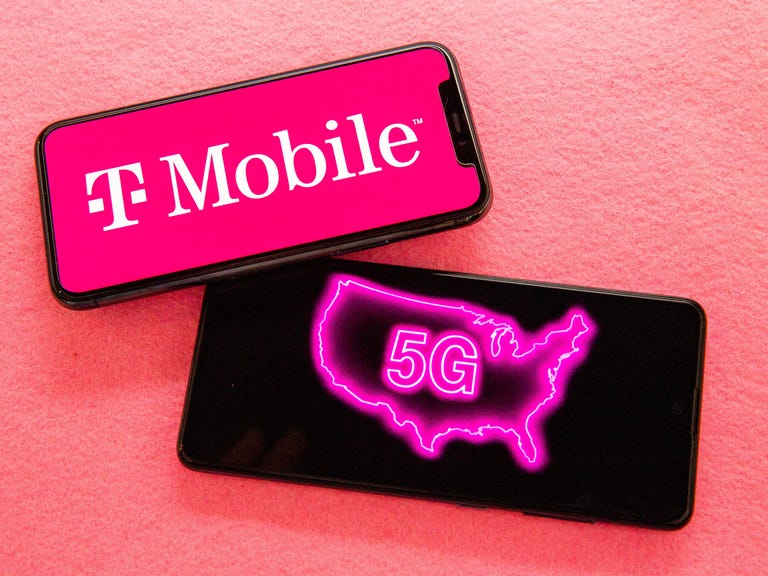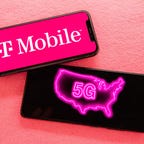Article updated on October 11, 2024 at 6:00 AM PDT

Our expert, award-winning staff selects the products we cover and rigorously researches and tests our top picks. If you buy through our links, we may get a commission.
Reviews ethics statement
Eli Blumenthal Senior Editor
Eli Blumenthal is a senior editor at CNET with a particular focus on covering the latest in the ever-changing worlds of telecom, streaming and sports. He previously worked as a technology reporter at USA Today.
Expertise 5G | Mobile networks | Wireless carriers | Phones | Tablets | Streaming devices | Streaming platforms | Mobile | Console gaming

Best unlimited phone plan for a single line
US Mobile Unlimited Flex for $17.50 per month (annually)
View details

Best phone plan for a family of four: $100 per month
Google Fi Wireless Simply Unlimited
View details
With AT&T, T-Mobile and Verizon offering a wide variety of plans, not to mention the exponentially larger assortment from prepaid and smaller carriers like Mint Mobile, Visible, Boost Mobile, MobileX and Google Fi Wireless, it's not easy choosing the best cellphone plan. Without doing the right research, you could end up paying a lot more than you should, and no one wants to lose out on saving money.
We're going to try to fix that. We've been covering the latest in wireless plans, from breaking down how to switch carriers, to picking the top unlimited and prepaid plans. We also explain which network the smaller carriers use, as well as T-Mobile's and Verizon's respective plan revamps and AT&T's plan rebranding (plus all their respective price hikes).
After covering the wireless industry for over a decade, here's CNET's guide for sorting through the madness, along with some of our picks for what we think are the best unlimited and prepaid plans available right now.

Best phone plans of 2024
Postpaid phone plans
T-Mobile reshuffled its plans last year and got rid of our previous pick in this spot, the Base Essentials plan that offered a single line for $45 a month. It replaced that option with an Essentials Savings plan, a "limited time" offer of $50 a month for a single line.
It has since been renamed to Essentials Saver, and although the plan is largely the same, there are some notable tweaks.
The data remains unlimited, and you now get 50GB of high-speed data, instead of the 20GB that Base Essentials offers. T-Mobile hasn't said how long the Essentials Saver option will hang around, but we break down how it compares to the carrier's plans here.
As before, perks like free Netflix or the bundling of taxes and fees into the sticker price aren't included. You do get unlimited hotspots at "3G speeds" and unlimited talk, text and 2G data in Mexico and Canada.
At $50 for a single line, the Essentials Saver plan is now the same price for a single line as AT&T's Value Plus plan, and both could be solid options for those looking for a single line without frills.
Although the price of the AT&T and T-Mobile plans are now the same, we give T-Mobile the edge here mainly because it includes hotspot access. Even at "3G speeds," the option could be a useful feature in a pinch.
It's also worth mentioning that T-Mobile allows for multiple lines on this plan, with two lines running for $80 a month. (If you need three or more, you may want to look at one of T-Mobile's other plans, which could be cheaper thanks to various promotions the carrier regularly runs.)
You may need to click "see more plans" and then "explore Essentials Saver plan" on T-Mobile's site to get this option to appear, although lately, the carrier has been showing it alongside its other offerings.

Photo Gallery 1/1

This is a bit more complicated. Verizon used to be our pick with its Play More plan that bundled in the Disney Bundle (ad-free Disney Plus, ESPN Plus and Hulu with ads) and services like Google Play Pass or Apple Arcade into the plan's sticker price.
Now the carrier has updated its wireless plans to remove perks like the Disney Bundle or Apple Arcade and Google Play Pass from being automatically included with its service. Even with its new plans, it's still our pick for best perks, but this will require a bit more explanation.
Instead of automatically putting services in, it now offers a variety of perks at $10 per month per perk, allowing users to pick and choose what they want. It also now allows its lower-cost plan, known as Unlimited Welcome, to participate.
Unlimited Welcome runs $65 per month for one line or $120 per month for four lines. You get unlimited talk, text and data but you don't get access to Verizon's fastest 5G networks (what it calls "5G Ultra Wideband") or hotspot data. For that, you will need to step up to its pricier Unlimited Plus plan ($80 for one line, $180 for four lines).
Both the Welcome and Plus plans include the ability to add perks at that $10 per month rate. This includes the Disney Bundle (normally $15 per month), Apple One individual (normally around $17 per month), Apple Music Family (which can be shared with five people and normally runs $17 per month) and Walmart Plus (normally $13 per month but also includes Paramount Plus Essential).
There are also other perks including an additional 100GB of hotspot data (normally $45 per month), 2TB of Verizon's cloud storage (normally $15 per month), three days of international data (what the carrier calls TravelPass, normally $10 per day).
All perks can be turned on or off at will, and you could forgo them entirely. You can even go with multiple perks on a single line if you want.
Whether this makes sense for your situation may require some time with a spreadsheet going through what services work for you and what you're willing to pay for them. The savings could add up if you're paying for some of these services directly, but it also could be more expensive than your existing plan.
It is also worth mentioning that Verizon allows you to "mix and match" lines, so if not everyone needs the faster 5G connectivity they could be on Unlimited Welcome while the one who does can go on Unlimited Plus.
AT&T allows something similar with its unlimited plans, but at the moment, it no longer offers any streaming perks. To get T-Mobile's perks everyone has to be on the same plan.
If you wanted a cheaper way to save on one or two services like the Disney Bundle, you could have four lines for $120 per month, add the Disney perk for $10 and be paying $130 per month for the whole package.
Oh, and you can also combine these plans with Verizon's other discounts for teachers, nurses, military and first responders to save a bit more.
Prepaid phone plans
US Mobile, which runs on Verizon's network for its "Warp 5G" service, AT&T's for its "Dark Star" option and T-Mobile's for its "GSM" or "Light Speed" offering, has recently updated its plans again. Now its cheapest Unlimited Flex option starts at $17.50 per line, per month when purchased annually ($210 total). That's significantly cheaper than its Unlimited Starter and Visible's offer, but it comes with some caveats.
Taxes and fees are still included in the sticker price, but you'll now get 10GB of high-speed data and 5GB of hotspot data (unless you want to add it for $30 for the year). You'll need to step up to the carrier's pricier Unlimited Starter or Premium plans to add more high-speed data, international roaming or streaming perks.
If you don't want to prepay for a year, you can get Unlimited Starter for $25 monthly.
It is worth noting that if you want to switch networks, you get two free switches but then it will cost you $2 each time you "teleport."
Other options: Verizon's Visible has long been competitive in the prepaid space. At $25 per month, it's not a bad alternative if you want Verizon's network. Opting for the annual payment option would put it at $275 for the year.
The base plan includes unlimited talk, text and data on Verizon 5G and 4G LTE networks but you won't be able to take advantage of Verizon's fastest networks. Unlimited hotspot is also included, though it's capped at speeds of 5Mbps. Those who want faster data speeds for their regular data and hotspot connections, plus unlimited talk, text and 2GB of data every day in Canada and Mexico need to look at Visible's pricier Visible Plus plan that normally runs $45 per month.
All that said, if you don't need Verizon's fastest possible speeds, don't want to outlay a full year's service in one shot and want to be on Verizon's network, it's hard to beat this price. Taxes and fees are also included in this price.
Google's phone service has adjusted its pricing, making it a bit less appealing compared to major providers. For a family of four, you can now get its Simply Unlimited plan for $100 per month ($25 per month, per line), which includes not only unlimited talk, text and 35GB of high-speed data but also 5GB of mobile hotspot use. There also is free roaming in Canada and Mexico, although taxes and fees aren't included in the sticker price. This used to be $80 per month ($20 per month, per line), but Google has raised its pricing.
Google Fi Wireless runs largely on T-Mobile's network and its service includes 5G access.
When it comes to data under 15GB, Mint once again has the best value if T-Mobile's network is solid in your area.
Getting 15GB of 4G LTE/5G monthly data is $20 per month at Mint if you're a new subscriber and buy in 12-month increments. After that, you can buy three more months at $35 per month ($105 total), six months at $25 per month ($150 total) or another year at $20 per month ($240 total).
Other options: Google Fi has a "bill protection" feature designed to refund you for data you don't use, but with a maximum monthly charge of $80 per month for one line and 6GB of data and unlimited talk and text, I think you're better off looking elsewhere instead of having to calculate how much data you're using.
AT&T has an online offer of 16GB per month if you prepay the $300 for a full year (equating to $25 per month). If you use up the 16GB, you will still get unlimited data, but it will slow speeds down to 1.5Mbps until your month resets.
Tracfone's 10GB plan generally runs $40 per month, though you can prepay for a year for $384 (which breaks down to $32 monthly).
The perk with the AT&T and Tracfone plans is that any unused data carries over to the next month. For the latter, if you're looking for a prepaid provider on Verizon that could be your pick.
If you're looking for service for a backup phone that's rarely used, TextNow has a free plan. Running on T-Mobile's network, the service offers free unlimited talk and unlimited texting, although ads are placed in its app that you use to call and text people. There isn't any data included with this option, and removing the ads without adding data would run you $10 a month. If you want to watch YouTube, FaceTime or surf the web, you'll need to connect to Wi-Fi.
Text messages are also done through the company's TextNow app, not through iMessage or WhatsApp, which makes sense as those services require data.
If you need data, things get expensive quickly. An unlimited data hour pass runs $1 per hour, a day pass is $5 and a month pass is $40. If you need data, you're better off going with a different provider than TextNow.
Other options: If you are largely on Wi-Fi and don't use much data then US Mobile's Light Plan is the go-to pick for low-cost but still with some data service. Buried under its other plans, the Light Plan includes unlimited talk and text as well as 2GB of data. This is better than our previous pick, Boost Mobile's new customer offer which gave you 1GB of data per month for a full year for $100.
At $96 for the year, this is cheaper than what Boost's offer was and includes taxes and fees in that sticker price. If you don't want to pay annually, it's $10 per month.
As we covered in our other wireless guides, to get the best deal you need to make sure you have the coverage that you need. This makes it hard to give a blanket recommendation of any one carrier. T-Mobile's service in New York may be excellent, but if you're in rural Iowa, Verizon is more reliable.
Your mileage may vary, but the good news is that these networks are growing and improving all the time, particularly as the three major players race to blanket the US with 5G. It's quite possible that you left a network complaining about its sparse service a decade ago, but now it's beefed itself up because of that race to acquire customers.
If you know any friends or family in your area that already use the carrier you're considering, ask about their experience. You could also go to a carrier's store and see if they offer any free ways to try out the service before switching over, such as T-Mobile's Network Pass. Verizon offers a similar 30-day "Test Drive" program, while the Cricket prepaid service has its own trial program that lets you sample parent AT&T's network.
Show more
Picking a wireless plan and carrier is a very individualized process. What works for you and your family's needs may be vastly different from your friends or neighbors. Even geographically, some areas have better AT&T coverage while others work best on Verizon or T-Mobile (and vice versa). The picks we make are based on over a decade of covering and evaluating wireless carriers, their offerings and overall performance.
In particular, we take into account the following:
1. Coverage
2. Price
3. Value
4. Perks
Coverage
Since all three major providers blanket most of the country with good 4G LTE or 5G, this is largely a toss-up on a macro level and why we recommend a variety of eSIM options for figuring out what works best for you in your particular location so you can best decide what is right for you. Looking at coverage maps on each provider's website will likely show whether you can get good coverage even if your experience isn't full bars or the fastest speeds.
This is also why with prepaid plans, we specify which network each prepaid provider uses as they sometimes make that a bit difficult to figure out.
Price/Value
Value is factoring in the total experience you might get, such as how much high-speed data you get and what's included in the sticker price.
Perks
Perks are add-ons beyond the core components of wireless service (talk, text and data). This could range from bundling in or discounting streaming services to extra hotspot data or the ability to use your phone internationally.
Show more
What's the difference between 'prepaid' and 'postpaid' plans?
When choosing a phone plan, there are generally two main options: a postpaid carrier like AT&T, Verizon and T-Mobile (plus cable options like Spectrum Mobile and Xfinity Mobile) and prepaid providers such as Mint Mobile, Metro by T-Mobile, Google Fi Wireless and Cricket.
The difference boils down to this: With postpaid, you're paying for your plan after you've used your service, while prepaid lets you buy that allotment in advance.
Prepaid providers are generally cheaper than postpaid options, though they are also often (but not always) more limited when it comes to additional streaming perks, hotspot data or device discounts. To get a several hundred dollar trade-in credit toward a new iPhone, Pixel or Galaxy, you often will need to commit to a postpaid plan from one of the big three carriers and be willing to stay with that provider for 24 to 36 months.
All three of the major wireless carriers also offer various discounts on the plan pricing depending on age, employment, military or veteran status or if you or someone on your family plan is a nurse, teacher or first responder. You can find details here for AT&T, T-Mobile and Verizon.
Show more
What about networks?
Look at a zoomed-out map of the US on the websites for AT&T, T-Mobile or Verizon and you'll likely see it pretty well colored in by their respective color. Zooming in is where things get a bit more complicated, which is why we can't offer blanket recommendations for one carrier over another. T-Mobile's service in New York may be excellent, but if you're in a rural area in Colorado, Verizon could be more reliable.
All three offer 5G and ever-increasing coverage and data speeds as they all ramp up deployments of the latest wireless flavor. It's quite possible that, a decade ago, you left a network complaining about its weak service, but now it's beefed itself up because of that race to acquire customers.
This is also why we recommend talking to friends, family or colleagues who have a different provider where you live, as locally your mileage may vary. You could also go to a carrier's store and see if it offers any free ways to try out the service before switching over, such as T-Mobile's Network Pass. Verizon now offers a similar 30-day program, while the Cricket prepaid service has rolled out its own trial program that lets you sample parent AT&T's network.
Smaller carriers often use the networks of larger providers. This includes the prepaid options owned by the big carriers (AT&T owns Cricket, Verizon owns Tracfone, T-Mobile owns Metro) as well as smaller options like Mint Mobile (which runs on T-Mobile), Google Fi Wireless (which largely runs on T-Mobile) and Boost Mobile (which runs on AT&T, T-Mobile and parent company Dish's 5G networks). We explain this all in more detail here.
Show more
Why get unlimited?
If you're on T-Mobile, all of your plans are unlimited, and Verizon no longer lets new users sign up for a shared data plan. Only AT&T still offers some tiered data plans and unfortunately, it's not great.
It has a 4GB-per-line plan that runs $50 a month for one line ($160 for four lines). Each line here gets 4GB of data, but if you go over that threshold in a month you're paying $10 for every 2GB. AT&T's plan also does not include access to its 5G networks.
Although everyone's wireless needs are different, for most we think unlimited plans make the most sense, especially when it comes to choosing a new plan.
AT&T's basic unlimited plan, called Unlimited Starter, is $65 a month for one line or $140 for four lines. If you have one or two lines and don't use a lot of data, you may be fine with one of these plans, though if you have just one line we'd recommend switching over to AT&T's $50-per-month Value Plus option or T-Mobile's Essentials Saver. Two lines of that T-Mobile plan run $80 a month, which is $10 cheaper than two lines of AT&T's 4GB plan and comes without the worry of navigating how much data you use.
Show more


